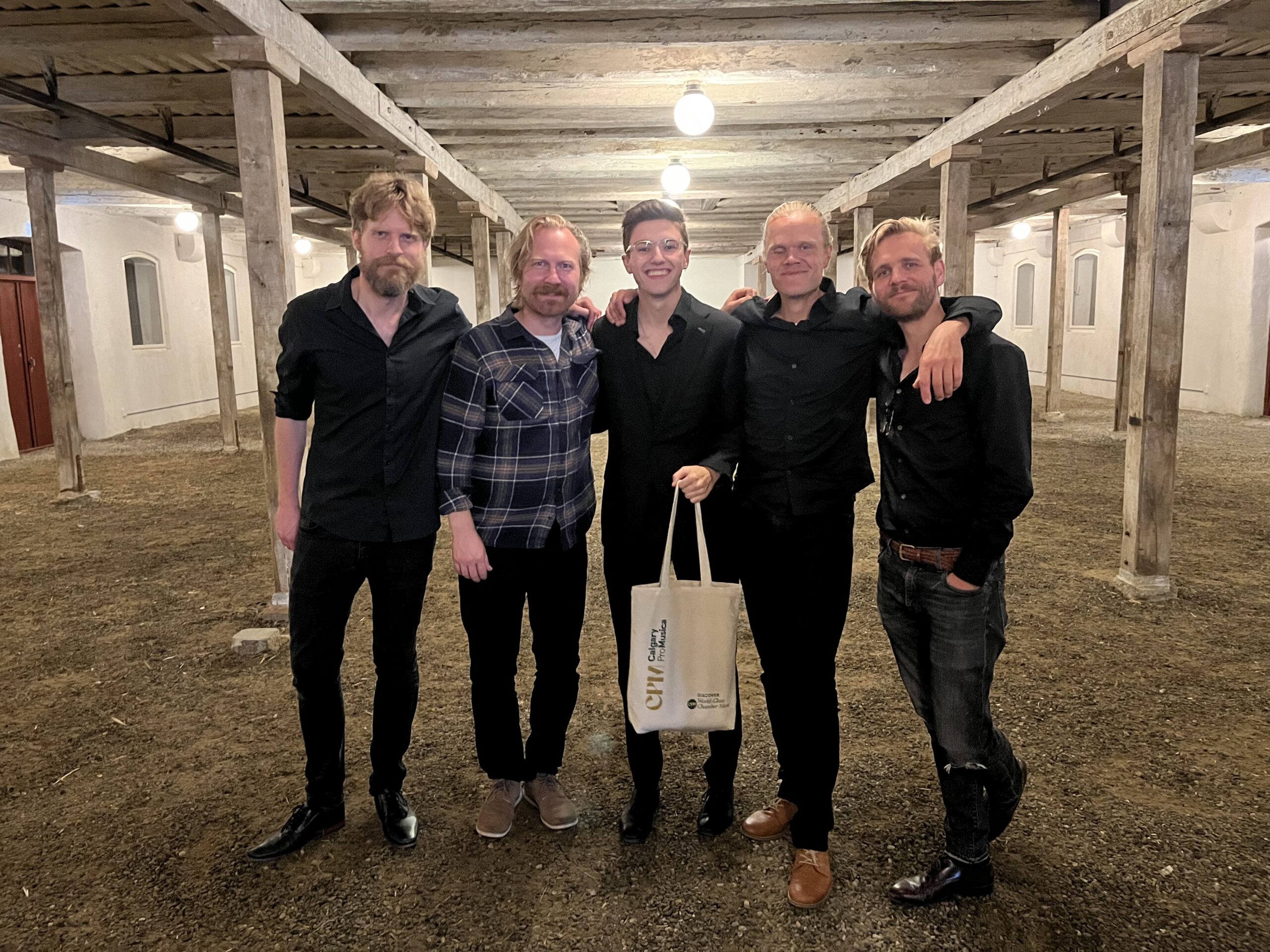
Wesley O’Brien (carrying a Calgary Pro Musica tote bag) with the Danish String Quartet at the Danish String Quartet Academy in Kerteminde, Denmark in August 2023
Violist Wesley O’Brien, the son of Calgary Pro Musica’s Artistic Director, had the extraordinary opportunity to attend the Danish String Quartet’s 2023 Summer Music Festival in Kerteminde, Denmark from August 28 to September 1, 2023. Wesley was the only participant from Canada! He generously shares his experiences and insights into what makes the Danish String Quartet so special (and his favourite string quartet).
If I could implore you to see one Calgary Pro Musica concert this year, it would be the Danish String Quartet. You also must go both nights, as they are breaking the mould and performing two different programs, only one of which has their fantastic folk music arrangements. With its musical variety and unbelievable talent, the Danish String quartet is a group unlike any other. Not to mention the musicians are wonderful human beings who are truly doing music out of love and passion, and this is abundantly clear through their performing.
This group is a rare breed in the string quartet scene because they still have their original four members and have never had any personnel changes. They were teenagers at a summer music festival when they originally formed their quartet. The quartet’s versatility, incredible ease of playing together and fearlessness in exploring different ways of interpreting the music are striking. There is a feeling in classical music that one must fit the mould in order to succeed, and I really admire the DSQ for breaking free from this.
Attending the 2023 Danish String Quartet Academy in Kerteminde, Denmark
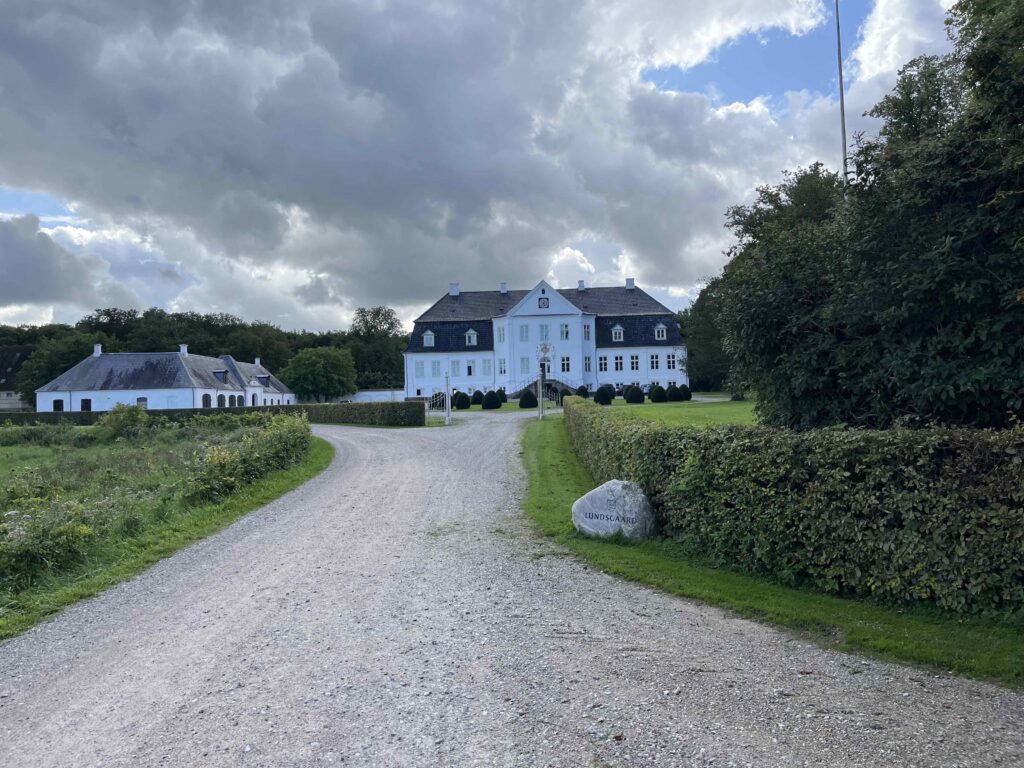
The festival venue, Lundsgaard Gods in Keterminde, Denmark, is a historic family farm owned by a farmer and his wife, an opera singer and arts patron. Behind the farm’s main house, there is a barn that has been modernized and outfitted with lights, acoustic improvements, and a stage. On the land is also a small, quaint cafe and hotel where guests can stay throughout the year.
The Academy began with a brief, informal meeting with the musicians: violinists Frederik Øland and Rune Tonsgaard Sørensen, violist Asbjørn Nørgaard, and cellist Fredrik Sjölin. I was immediately struck by their humbleness; there was not a whiff of arrogance or sense of superiority with any of them. This was unlike any other summer festival I had taken part in; so often it feels like the festival musicians say it is your honour to be here and to participate, but the first thing Frederik told us was how happy and honoured the quartet was to have us there! It was incredibly refreshing. This was just a taste of the atmosphere the quartet brought to the Academy.
Musically, this was the most amazing week of my life. The members of the Danish String Quartet had an amazing energy that I felt so lucky to be a part of. None of them remained seated during any of our coachings. They were always up singing the piece and moving with their bodies to help my group understand the emotion of the piece or energy that we needed to harness. I was also astounded by how all of the members of the group could be on the same wavelength without ever communicating with each other about my group. From coaching to coaching there was consistency, with rarely any of the members contradicting or disagreeing with another. This was proof of the amazing connection the group had with each other and how long they had been playing together. They worked with my group on awareness of the other voices to be sure that we were always listening to the leading voice and allowing the harmony to come through. This is difficult in as dense a piece as the Brahms G Major Viola Quintet we were working on.
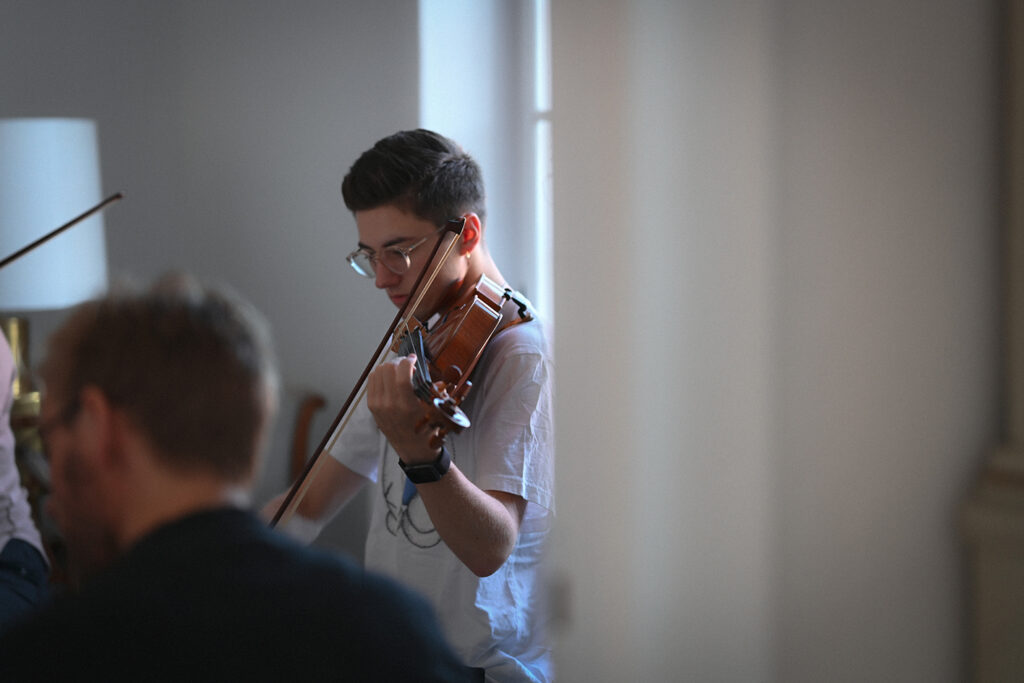
I was perhaps the most excited for the concert evening in which the Danish Quartet members as well as the other visiting faculty performed a short recital. This concert was every bit as amazing as I hoped it would be. The quartet performed the first movement of Schubert’s massive cello quintet with visiting cellist Bjørg Lewis as well as Britten’s Three Divertimenti for String Quartet (a favourite piece of mine because of the DSQ). These performances demonstrated the immense ease and joy which I had come to expect from such amazing performers. The recital concluded with a set of folk tunes from their upcoming album. These were what I was most looking forward to, as I had never seen anything like it live before. The energy with which they performed these folk tunes was electric: from Rune’s metronomic yet lively foot tapping to the smiles on their faces as they looked at each other. I loved it, and it is easily one of my favourite concerts I have been to in recent memory.
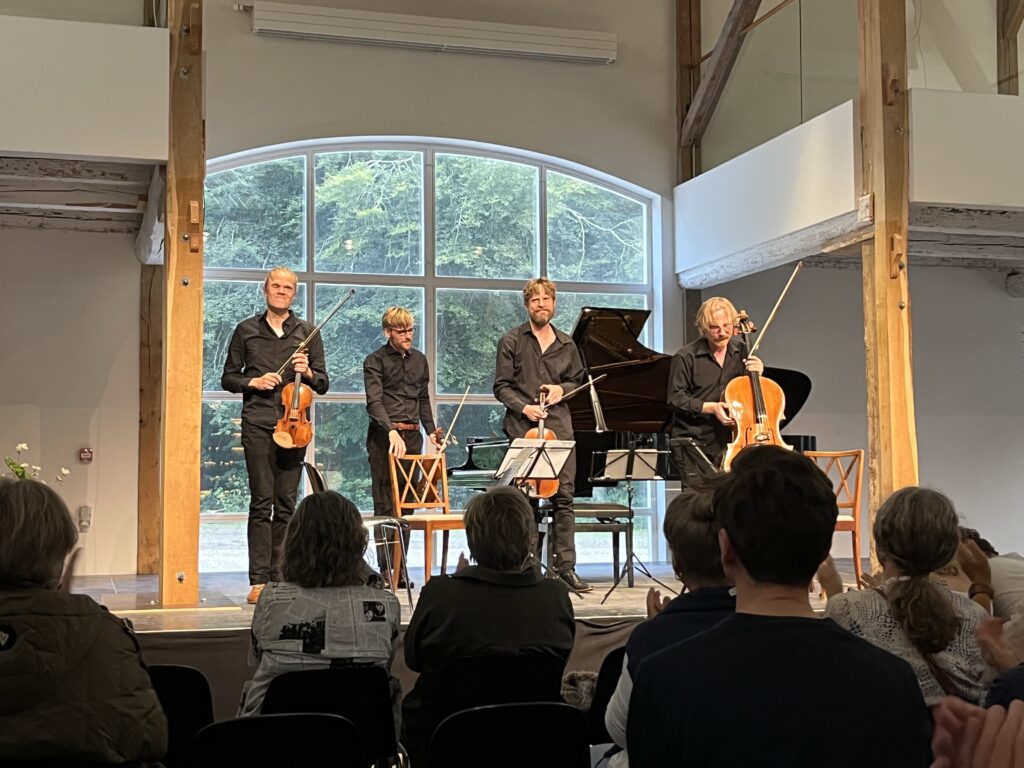
On the Academy schedule were a few stand-out events in addition to the fantastic rehearsals, coaching and lessons with members of the quartet. There was a sight-reading evening with the quartet as well as a folk music reading and coaching, an Alexander Technique lesson, lectures from leading teachers and musicians in Europe and even a game of soccer (or football as they call it). Another night featured a Hygge evening, which is a Danish traditional get together with fun, food and drinks. These evenings and events are what made the DSQ Academy stick out for me from all other music festivals I have attended. These events were not just for the student participants, but for the faculty as well.

The members of the Danish String Quartet and other faculty members did everything with us. They ate all the meals with us, coached us, gave us lessons, attended the seminars, even sightread and shared beers with us every night! This made the Danish String Quartet feel so much more than just a group whose recordings I always listen to or a YouTube video I watch on repeat. The four members of this quartet are some of the most fun and genuine people I have met in the classical music community. They began the Danish String Quartet Academy because they wanted to offer the same experience that they had when they met at a summer festival all those years ago.

My private lesson with DSQ Violist Asbjørn Nørgaard
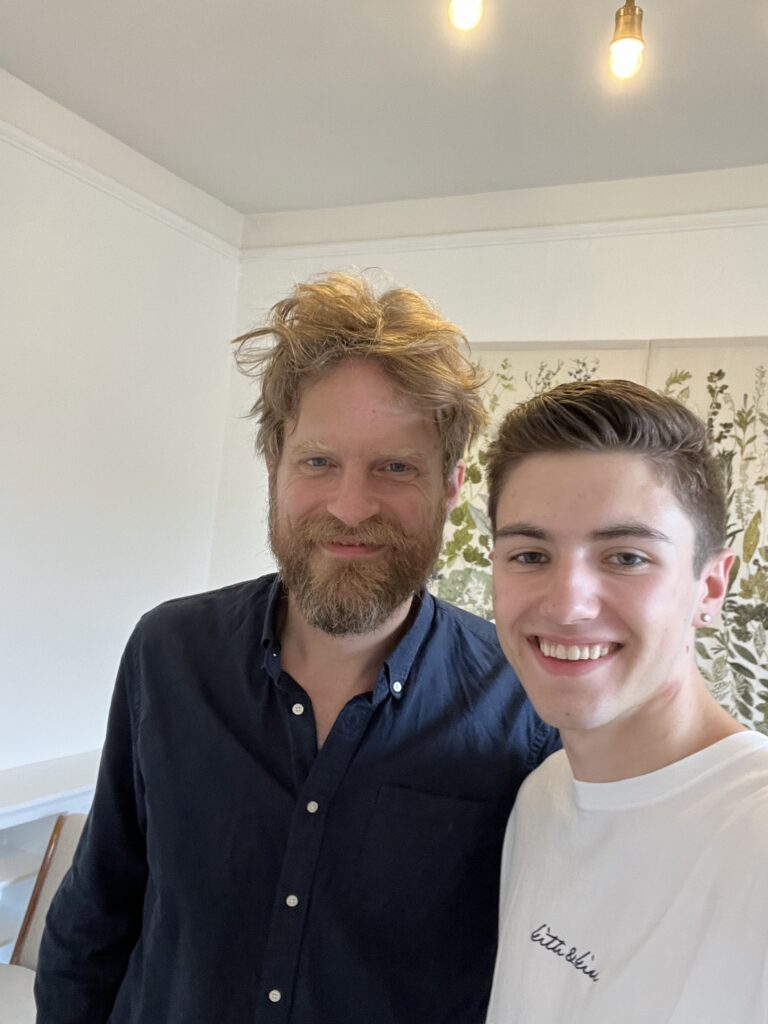
From a technique perspective, I’m not sure there is a string quartet violist with better posture or facility than Asbjørn Nørgaard; there is no unnecessary tension in his playing. I also love how well he fulfills the role of the viola in a string quartet. I always describe the viola as the team-player of the string quartet: an instrument that the untrained ear might not notice was there but would definitely notice if it was removed. I feel that Asbjørn has this incredible skill of blending, where he can fit his sound into the group’s so masterfully and then effortlessly pop out of the musical texture when it is the viola’s time to shine. In my lesson with him, we worked on the first movement of Arnold Bax’s Sonata for Viola and Piano, a piece I had been working on with the goal of improving my sound production and the singing qualities in my individual playing. Asbjørn helped me work on this perfectly.
We spent the hour connecting viola playing to nature and he emphasized how we should be looking for forces like gravity and centrifugal force to help us draw the most luscious sound that we can out of the viola. He had me play the dark, yet beautiful, opening of the Bax in a squat so that I could feel a deep connection with gravity and to the floor. This was incredibly eye-opening and helped me immediately to release tension from my upper back and shoulders and to pull a deeper, darker sound with a heavy connection to the floor. He also had me plant my feet and swing my arms around my body. He said this is how a bow stroke should feel: just a natural left to right rotation.
I was sure to take some time at the end of the lesson to ask Asbjørn some questions specifically about his outlook on string quartet playing and how he achieves the blended quartet sound I so deeply admired. He told me that he pictures a balloon in space between him and every individual member of the quartet, as well and one directly in the centre of the four of them. He says he is always trying to play towards one of the balloons, whether he has a musical moment with the first violin or there is a unison moment when he must play to the central balloon to blend the sound together. This was an analogy I had never heard before, and I felt like it instantly made an impact on my chamber music playing. He also told me that, for those moments when he wants to poke out of the texture, he picks a specific spot in the venue, far away from the stage, to imagine playing to. Trying this has helped me to pull the sound from inside my instrument, rather than just trying to play louder all of a sudden just to stick out.
Wesley’s Danish String Quartet Listening Guide
- DSQ’s concert on NPR’s Tiny Desk series (YouTube). In this video, the quartet played a collection of Danish Folk Music from their 2014 album, Wood Works. I had never been much of a folk music fan, but I could not pull myself away. I remember in the description of the video reading a quote from the quartet’s bio that said, “We are simply your friendly neighbourhood string quartet with above average amounts of beard.” I was hooked.
- Bartok’s 1st quartet: In my first year at university, my quartet learned and performed Bartok’s 1st quartet, so I felt that I knew it pretty well and had listened to lots of recordings of the piece. The Danish Quartet’s recording, however, blew me away right from the beginning and shot to the top of my list of favourite recordings of the piece.
- They have “standard” albums of some of the classical cannon, including some of the late Beethoven quartets as well as quartets by Shostakovich, Bartok and Mendelssohn. They also have a recording of the complete quartets and quintet by Danish composer Carl Nielsen. I listened to these recordings ad nauseam and was immediately in love with the versatility of the quartet.
About Wesley
I’m Wesley O’Brien, the son of Calgary Pro Musica’s Artistic Director Dean O’Brien. I have been playing the viola since I was 6 years old. I began studying with Theresa Plotnick, and I took part in the Amici String Program and the Calgary Youth Orchestra. Now I am a third-year student at the Robert McDuffie Center for Strings at Mercer University, majoring in Viola Performance with elective studies in business studying with Victoria Chiang and Rebecca Albers.

